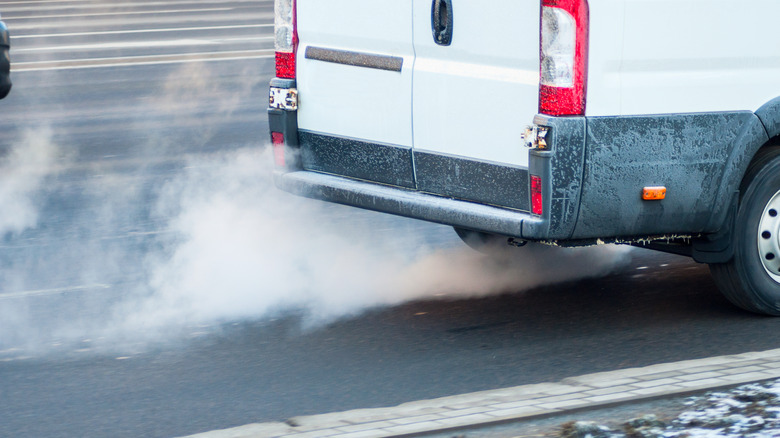What Happens If Water Gets In Diesel Fuel?
Water and diesel fuel don't mix. Although all diesel grades contain a minuscule percentage of water from the refinery, moisture in the diesel tank won't cause problems until the water content reaches the saturation point. When that happens, the water will separate from the diesel and turn into emulsified or free water. Since water is denser than diesel fuel, the water tends to settle on the bottom of the tank and start causing worrying symptoms.
Moreover, diesel has hygroscopic properties similar to brake fluid, which attracts moisture from the atmosphere and heightens the probability of raising the water levels inside the tank. And it's even more so with ethanol-based diesel fuels, as the methyl ester content of biodesels attracts water like a sponge. Water contamination is also possible via tank or fuel line leaks, condensation due to extreme weather changes, or poor handling.
Excess water could severely contaminate the remaining diesel inside the tank, but that's only the tip of the iceberg. Contaminated diesel causes rust buildup inside the tank, leading to clogged fuel filters, damaged injectors, or both.
Furthermore, bacteria, algae, and other microorganisms will thrive in water-contaminated diesel and produce harmful acids, slime, or biomass that corrode the fuel quality, clog filters, destroy injectors, and accelerate the formation of harmful engine deposits, all of which are bad news for your hardworking diesel truck.
Symptoms of excess water in diesel fuel
The primary symptom of your diesel car or truck running on contaminated diesel fuel is an illuminated "water in fuel" warning light on the instrument console. The warning light will be amber or red, and the symbol will depend on the vehicle. Having it light up while driving is bad news either way, as it means the sensors have detected water in the diesel fuel.
Other telltale signs include weak engine performance, slow acceleration, erratic idling, hard starting, and excessive white or black smoke from the tailpipes while the engine runs. If the "water in fuel" warning light turns on while driving or after refilling the tank with diesel, stop driving immediately, turn off the engine, and call for help.
Modern diesel cars, like some Kias and Volkswagens, require advanced knowledge and tools to drain the water from the fuel system, necessitating a visit to the garage or service center. However, the process is not too complicated for some diesel trucks or heavy equipment, although some hand tools and a little know-how go a long way.
How to drain water from diesel fuel filters
Newer turbo diesel engines typically have two factory fuel filters: a primary and a secondary filter. The former mounts closer to the fuel tank, while the secondary filter mounts closer to the engine. Both help to protect the sensitive injectors, fuel tank, and fuel lines from harmful dirt, particles, sludge, and water contamination.
The sensor in the primary filter will most likely trigger the "water in fuel" warning light. To drain the water from the filter, open the fuel drain valve and use a clear water bottle to collect the drained fuel. In some cases, you may need to get under the truck to access the fuel drain valve, but the idea is to collect some of the contaminated fuel to see how much water is in the system.
If you see water and fuel separating inside the bottle, continue draining the fuel until no water is detected. To be doubly sure, turn the ignition to the ON position to purge more fuel to the primary filter, wait for 10 to 20 seconds, and turn the ignition OFF. Open the drain plug, collect the fuel, and see if all the water is gone. At this point, it's better to replace the primary filter before setting off.


